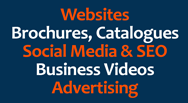6 Things You Should Know About Email Marketing

EMAIL MARKETING has never gone out of style. Over the past decade, email marketing has resurfaced as one of the most effective tactics marketers can use to keep people within their buyer funnel.
Whether initiating someone who has just become aware of a product or retaining past customers by reminding them of what you offer, recurring emails are effective at helping companies grow.
Yet, many businesses, especially small ones, miss out on the potential for email marketing to benefit their bottom line. They either neglect their email list completely, or they engage in haphazard campaigns that don’t take the customer’s experience — and their need for relevance — into account. Other marketers may be trying hard but still neglect best practices, hurting their results.
Whatever camp you fall in, there is always more to be learned about email marketing. Dive into the topic, and find out how to become more effective at email marketing by considering the following things every marketer should know.
1. You’re Writing to ONE Person
Email is a form of one-to-one communication. Yes, you are sending to the hundreds or thousands of people who are on your email list, but you are writing for each of those people individually. Your goal should be to have each person on your email list to feel like it was a personal message from you to them.

The best way to start is by picking a friend to write to. Then use the same greetings in your email marketing as you do in your personal emails. If you start your personal emails with “Hey Dave – “, then start your marketing emails the same way. If you don’t have a first name, that’s not a problem, just start your email with “Hi” or “Hey”.
Here’s another sneaky tip. Save the fancy HTML designs and images for newsletters. Create an email marketing template that has a copy of your email signature (just as it appears on your personal email) at the bottom of the email.
2. You Must Respect Your Subscribers’ Time
Writing an email that looks and feels personal is the first step toward respecting your subscribers, the next step is to respect their time. Email subscribers will tolerate a mild amount of irrelevance in their inbox for long periods of time, but they will not tolerate rudeness, obnoxiousness or manipulation.
“67 percent of consumers unsubscribe from a mailing list because the emails were excessive or irrelevant.”
- Segment your email lists based on your subscribers’ interests and only send them emails that are related to their interest.
- Send one to four emails per month. That’s usually enough to keep you top of mind without feeling spammy.
- Check your email marketing system and see if you can put a hard cap on the number of emails someone receives in a month. You should also look to your drip campaign templates to ensure that your messages have variety and are not pushy.
3. You Have to Show Signals That Say “This Isn’t Spam!”
A second issue email subscribers have is with spammy, cheesy emails. Even if your emails slip through the spam filter cracks, they can still get deleted or marked as spam by the user.
In subject lines, avoid the use of words like:
- Bargain
- Cheap
- Deal
- Gimmick
- Weird Trick
Instead, subscribers like seeing messages that indicate relevance and personability, such as “your,” “thanks,” “news,” “update” and sometimes even “special” or “offer.” Mentioning the name of a month can also signal relevance since it suggests an expiration window on the content’s information.
Bottom line: review your email templates as a whole from time to time, and use a fake sample subscriber account so you can see firsthand how your emails are appearing to subscribers.
Wondering if your email is spammy? You can run it through SpamOwl, a super cool tool that will check your email against 650 words that are typically identified as spam.
4. You Have to Scrutinize Your Subject Lines
Businesses tend to muck about with email subject lines when they should be treating them like a carefully considered presentation. Imagine your email is a $45 dish at a fancy Soho restaurant — you want to plate it delicately but impressively while using minimal elements.
Try to use the exact words you need to describe your topic and avoid excess prepositions. You can use a subject line preview tool like this one to check that the email displays properly on mobile without getting cut off. Test multiple subject lines in-house, and set up A/B testing if you have an automation tool to find the best performing option.
There’s more to subject lines than length. Coschedule has a wonderful FREE Headline Analyzer Tool that they’ve designed for blog posts but works just as well for subject lines.
Also, try to use personalized email templates that insert the recipient’s name. This practice makes the email 26 percent more likely to be opened.
5. Email Automation Tools Make Everything Easier
Email automation tools make email marketing feasible. Without them, managing a huge subscriber list — let alone sending out emails segmented by interest — would be next to impossible.
There are plenty of options out there for email marketing automation platforms. Weigh your choices based on the features you need and your budget, keeping in mind that many platforms have free (albeit limited use) price tiers.
There are literally dozens of email marketing platforms to choose from.
- MailChimp: Free for 2000 contacts, beautiful design, integrates with everything.
- ConstantContact: Ideal for newsletters and simple automation, integrated surveys and event emails.
- Aweber: Low cost, integrates with everything, great reporting.
- Get Response: Great landing page creator, time travel feature so that recipient gets the email at the right time, no matter where they are.
- Emma – Love their split testing feature.
- Hatchbuck – This is a CRM with email marketing and automation. Offers terrific lead scoring and a great dashboard.
- SimplyCast – Have them set up your entire marketing funnel! Outstanding personal support and hands-free service.
Here’s a plot from G2 (a platform review site) that shows some of the most popular email marketing platforms:

Using any one of these tools can help you segment your emails by subscriber type, including their position in your funnel and the past actions they have taken.
For instance, if someone downloaded a PDF infographic from your site a few weeks back but hasn’t looked further at your products, then you can have a pre-arranged drip campaign sent to inform them about the services you offer or encouraging them to look further at your content.
Email automation tools offer some amazing features, such as A/B testing, where you send out two emails with something changed between them to test which version performs best. Other common options include frequency capping, customizable email address capture forms for site visitors and templates that autocomplete personalized information.
- Do you want to only send newsletters or do you want automated drip campaigns?
- Are you using a CRM and do you want your email marketing to integrate with your CRM?
- Do you have a clearly defined sales and marketing process or do you need help developing a sales and marketing funnel using email?
- Are you using lots of third-party platforms like WordPress, LeadPages, or Opt-In Monster that require easy integration with your email marketing software?
One thing you DON’T have to worry about is switching. If you don’t like what you’ve chosen. These days it’s very easy to move your existing data from one provider to another. Most email marketing systems either offer a free plan or have a free trial that will help you get started.
Ultimately, it’s up to you to do your research, get input from experts and other business owners and make a choice that works best for you and your business.
6. Email Marketing Should Be Just Part of the Whole
Above all else, relevance is the most important thing for your email marketing campaigns to attain.
As a close second priority, ensure that your emails fit within the larger ecosystem of your other marketing channels.
Are you using email to promote new content or site updates? Are you trying to capture email addresses on your website via social media or during events? Do you have your CRM integrated with your email list so that your list stays current and your messaging relevant to the buyer? Are you tracking email-only promotional use when someone redeems the offer in-store?
Always try to think of email as a waypoint on a customer’s winding path toward an eventual purchase (or repeat purchase). Never rely on email alone as a tool for bringing in business.
If you can integrate your email messages into your overarching marketing strategy, then email marketing will continue to be an effective tool that serves you and your customers well for years to come.
Until next time… Onwards and Upwards!

John
If you want to talk about creating the best opening statement for your sales team, give John a call 0414 955 743 – advice is totally free of charge.


